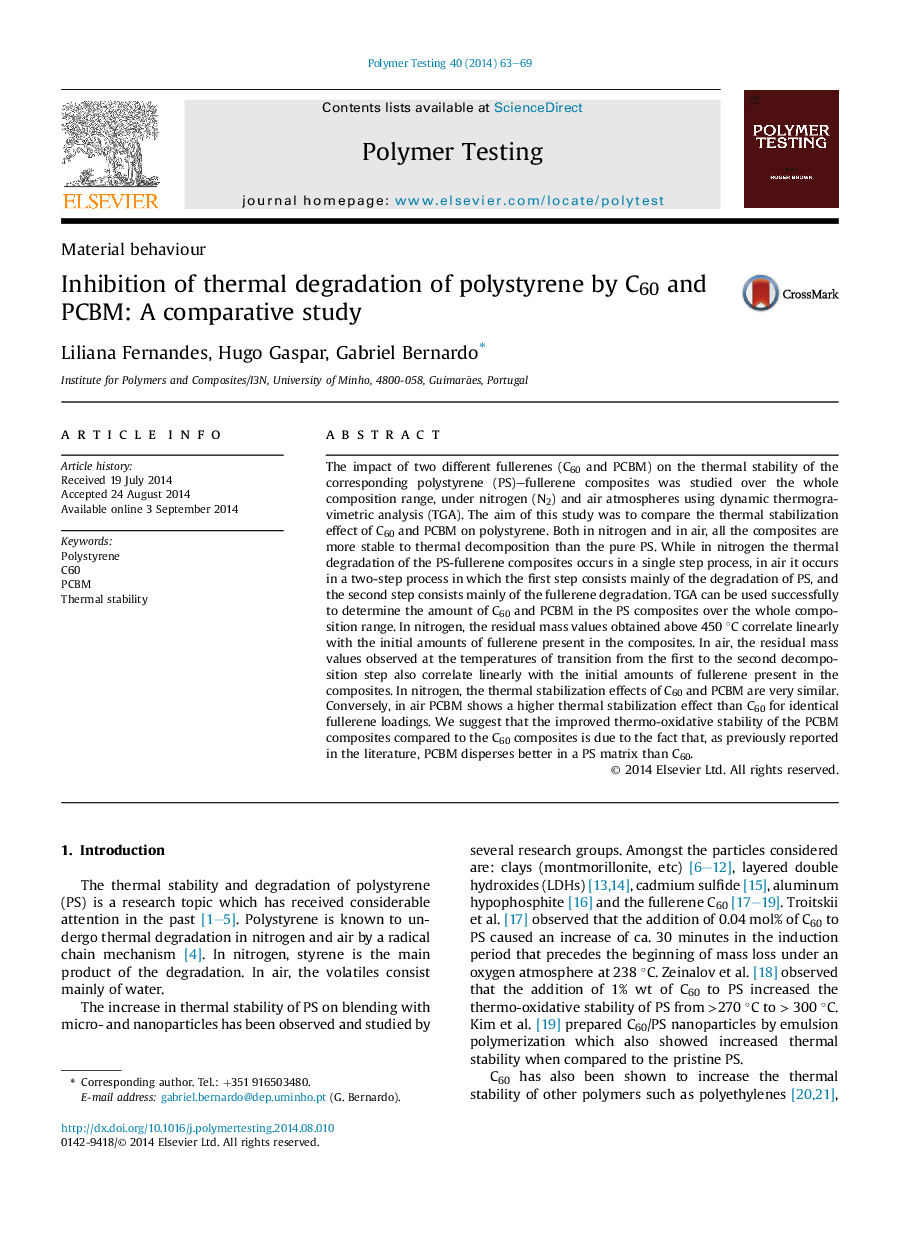| Article ID | Journal | Published Year | Pages | File Type |
|---|---|---|---|---|
| 5206150 | Polymer Testing | 2014 | 7 Pages |
Abstract
The impact of two different fullerenes (C60 and PCBM) on the thermal stability of the corresponding polystyrene (PS)-fullerene composites was studied over the whole composition range, under nitrogen (N2) and air atmospheres using dynamic thermogravimetric analysis (TGA). The aim of this study was to compare the thermal stabilization effect of C60 and PCBM on polystyrene. Both in nitrogen and in air, all the composites are more stable to thermal decomposition than the pure PS. While in nitrogen the thermal degradation of the PS-fullerene composites occurs in a single step process, in air it occurs in a two-step process in which the first step consists mainly of the degradation of PS, and the second step consists mainly of the fullerene degradation. TGA can be used successfully to determine the amount of C60 and PCBM in the PS composites over the whole composition range. In nitrogen, the residual mass values obtained above 450 °C correlate linearly with the initial amounts of fullerene present in the composites. In air, the residual mass values observed at the temperatures of transition from the first to the second decomposition step also correlate linearly with the initial amounts of fullerene present in the composites. In nitrogen, the thermal stabilization effects of C60 and PCBM are very similar. Conversely, in air PCBM shows a higher thermal stabilization effect than C60 for identical fullerene loadings. We suggest that the improved thermo-oxidative stability of the PCBM composites compared to the C60 composites is due to the fact that, as previously reported in the literature, PCBM disperses better in a PS matrix than C60.
Keywords
Related Topics
Physical Sciences and Engineering
Chemistry
Organic Chemistry
Authors
Liliana Fernandes, Hugo Gaspar, Gabriel Bernardo,
